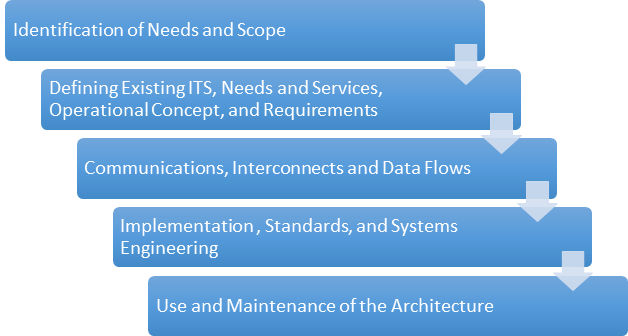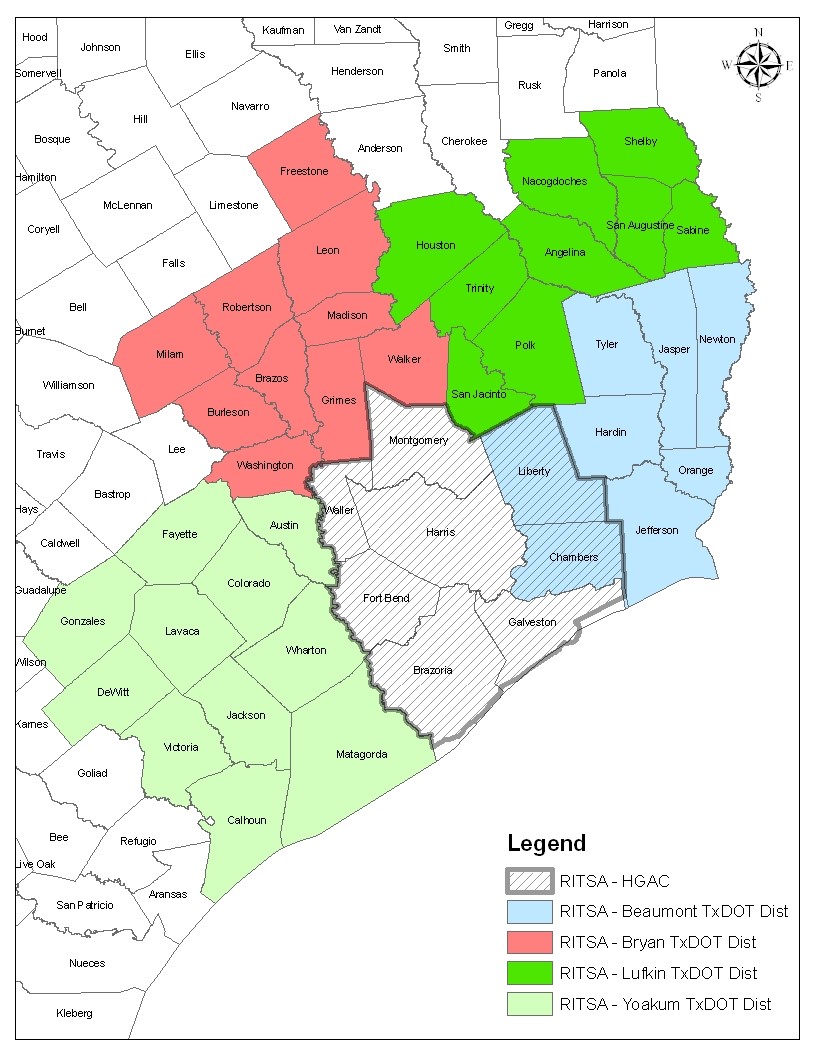 Houston-Galveston Area Council Transportation Systems Management & Operations Clearinghouse
Houston-Galveston Area Council Transportation Systems Management & Operations Clearinghouse
 Houston-Galveston Area Council Transportation Systems Management & Operations Clearinghouse
Houston-Galveston Area Council Transportation Systems Management & Operations Clearinghouse
This section lists prioritized needs as identified from the current stakeholder survey, and past first responder’s survey, Houston TranStar Website User Survey and HGAC operations committee input. This section also includes a table that can be used to link the prioritized needs to ITS services. The last part of the section identifies candidate ITS services based on prioritized needs and high-level needs, that will provide the most benefits for the region.
One of the initial efforts of plan development was to use information from three ITS user surveys to assess and prioritize the regional ITS needs.
These surveys were further used to provide some additional detail as to what types of ITS services could address the problems listed by the participants as priority to deploy. These ITS services are not listed in priority order, but these services combine to form the top priority tier of ITS services to consider providing and/or enhancing compared to current capability.
A significant, and repeated, comment from the surveys was the need to evaluate ITS projects for their before-after benefits. There is a cost associated with study and evaluation, but there were several comments about agencies in the region completing these evaluations so that all would know which projects have a quantifiable benefit to operations and safety and at what level.
The overall development of the regional ITS architecture and corresponding generally followed the process shown in the figure below. These general descriptions are followed up in subsequent sections in more detail, each of which summarizes a significant step in the architecture/guidance development. The development of the regional ITS architecture and the additional ITS guidance is being completed in the context of the regional project planning and development process.

The preparation of this guidance began with updated surveys of transportation agencies and leveraged past effort including a survey of first responders in the area. A discussion of those needs, a regional concept of operations for ITS, the use of standards, and high-level functional requirements for ITS are included in this updated guidance.
A key aspect of this architecture guidance is a discussion of the systems engineering process, when it should be used in more detail, and what it should entail for various types of projects. This discussion was utilized to develop the region’s first Risk-Based Systems Engineering Process which is a key feature of this website and can be downloaded by clicking the button below.
RAD-IT Architecture File
The RITSA requirement has its roots in the Transportation Equity Act for the 21st Century (TEA-21, 1998). The highlights of compliance with Federal regulations are:
But to incorporate ITS into the transportation network, it must be injected into the transportation planning and project development process that exists in the region. In 2001, FHWA and FTA published the rules that address the inclusion of ITS in regional planning activities and how projects should be delivered so that they lead to integrated systems, and Federal funding relies on compliance with these rules.
The Houston-Galveston Regional ITS Architecture covers the following eight Texas Counties:
The Texas Department of Transportation has undertaken a comprehensive effort to develop regional ITS architectures for many TxDOT districts where the MPO has not completed the RITSA. TxDOT has developed regional ITS architectures for the Brazos Valley, Lufkin, Beaumont, and Yoakum regions.
The figure below shows the H-GAC region in relation to the four bordering regions which have standalone ITS architectures:
The Houston-Galveston Regional ITS Architecture includes the TxDOT Houston District and two counties within the TxDOT Beaumont district, but which are also in the H-GAC service area (Chambers and Liberty counties). During ITS project development, agencies with jurisdiction in Chambers and Liberty counties should seek guidance from both the H-GAC RITSA as well as the Beaumont RITSA. Beaumont’s RITSA also includes the city of Baytown, Texas, since Baytown has city limits in both Chambers and Harris counties. Baytown will also be included in the H-GAC RITSA.

Most architectures are developed for a time horizon of 15-20 years, and incorporates existing and planned ITS capability. However, this living document presents ITS development in near- and medium-term timeframes, with the anticipated ITS projects captured within the architecture over future years.
Users should understand that minor changes to the architecture could occur several times per year. Users can find the latest versions of the architecture RAD-IT file here, along with guidance on the changes made since the architecture was initially prepared. This is especially important when preparing project architectures or planning for future project architectures.
However, the proposed ITS deployment plan has two elements:
The strategic part of this plan/guidance examines long-term development (10+ years), but recognizes that discussion of ITS systems in a long-term light is more conceptual than concrete. In a developing a longer-term view of ITS systems, projects that may eventually be considered for implementation are currently in the research and/or development phases. Future systems include those involving advanced vehicle safety, vehicle-roadside communications, and automated vehicle and security operations.
It is recommended that the Operations Task Force at H-GAC continue to monitor trends and developments in ITS to harness evolving and enabling technologies as they become viable. As this plan and future guidance is updated, local stakeholders should conduct periodic reviews of ITS deployment and determine if there are significant changes in technologies that require the RITSA and deployment plans to be revised. Revisions can be suggested through the Change Management Process

